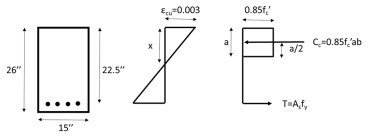Columns
Column, in structural engineering, is a vertical structural element that primarily supports compressive loads and transfers them from the structure's superstructure, e.g. floors, beams, and roofs, to the substructure, i.e. foundations, supporting elements and the ground. Columns are essential components in buildings, bridges, and various other structures, providing structural stability. In fact, they distribute the loads effectively preventing structural failure. Columns are constructed from various materials, including concrete, steel, masonry, and wood, depending on the structural requirements and design specifications. Building codes and safety standards determine the design of columns.
Want to read more like this?
Behavior of Columns During Earthquakes
Jan, 01, 2019 | EducationThe behavior of columns in earthquakes is very important since column failures may lead to additiona...
Beams
Sep, 14, 2023 | EducationBeam, in structural engineering, is a horizontal structural element that is designed to carry and...
Structural loads
Sep, 07, 2023 | EducationStructural loads refer to the forces, pressures, and other external actions that act upon a struct...

Types of reinforced concrete structures collapse
May, 20, 2019 | NewsMany types of failure can trigger the collapse of a reinforced concrete building. Any structure m...
Structural Analysis
Sep, 16, 2022 | EducationThe prediction of the response of structures when they are subjected to specified arbitrary extern...
Structural deflection
Sep, 07, 2023 | EducationStructural deflection refers to the displacement or bending of a structural element when subjected...
Structural systems
Sep, 14, 2023 | EducationStructural systems refer to the arrangement of structural elements within a building or structure...
WoodWorks
Dec, 09, 2013 | SoftwareStructural stability
Sep, 16, 2022 | EducationStructural stability is the ability of a structure to maintain its shape and resist deformation or...
Trending

Diaphragms

Nominal flexural strength of a reinforced concrete beam

Calculate the Maximum Shear Stress

Truss deflection using the unit load method

Overhanging beam: shear force and bending moment calculation

Calculation Example – Beam with inner hinge (Part A). Find the Reactions

Method of sections

